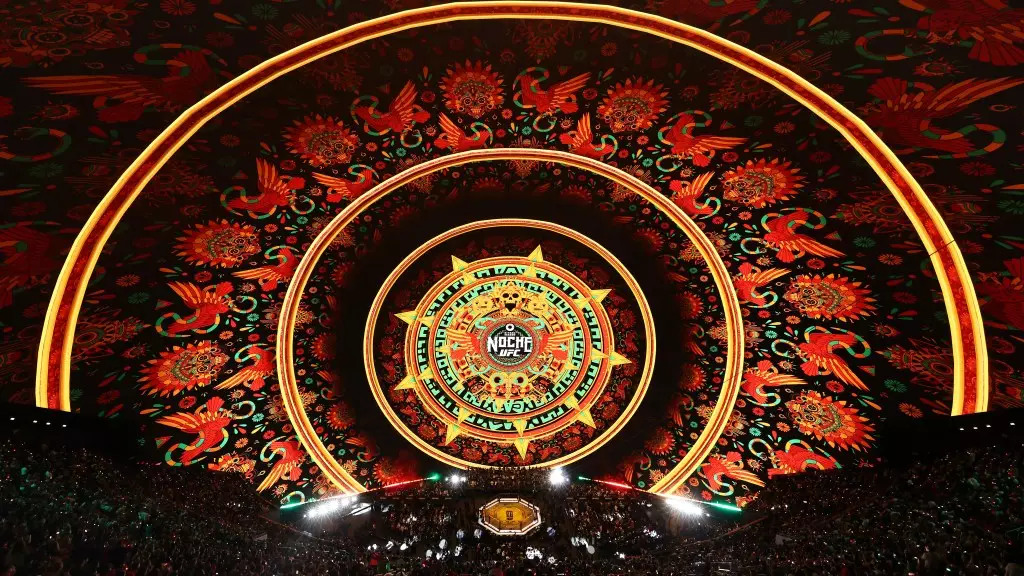UFC 306 recently sparked a substantial conversation in the MMA community, particularly through the critiques of former heavyweight contender Brendan Schaub. His insights provide a lens through which we can examine the evolution of promotional strategies within the sport and their implications on fighter reputation and viewer satisfaction.
The Spectacle of Vision Over Combat
UFC 306, held at the renowned Sphere in Las Vegas, was highlighted by two championship bouts, specifically Merab Dvalishvili vs. Sean O’Malley and Valentina Shevchenko vs. Alexa Grasso 3. Yet, rather than the matches themselves, Schaub pointed to the overwhelming emphasis the UFC placed on the venue. He argued that this approach detracted from the fighters’ abilities and accomplishments. Schaub’s sentiment reflects a growing concern that the sport’s integrity may be compromised when promotional materials echo the glitz of the venue rather than the skills and narratives of the athletes involved. As an audience that typically tunes in for high-profile fights, there’s an inherent disappointment when the spectacle overshadows the sport itself.
Schaub’s critique casts a shadow over the UFC’s progressive strategies aimed at scaling up the viewer experience. Instead of creating a narrative centered around the fighters’ motivations, history, and skills, the promotion seems to prioritize the aesthetic sheen of the event, elevating the venue to “the belle of the ball” status. This could potentially alienate devoted fans who seek the personal stories and rivalries that enrich the context of competitive fighting.
The Cost of Production versus Fight Quality
While the production value of UFC 306 was noted as extraordinary—with the promotion reportedly investing over $20 million—Schaub remained unconvinced that such expenditures translated into worthwhile fight quality. He remarked on how the UFC achieved their goal regarding the Sphere’s presentation, yet expressed a profound dissatisfaction with the card itself. Fans expect gripping matchups and the ferocity typical of a pay-per-view event, but Schaub believed that UFC 306 ultimately delivered a lukewarm product. This apprehension invites scrutiny regarding the priorities of the UFC. Are they focusing too heavily on creating an extravagant stage, potentially neglecting the authentic competitive nature that is the linchpin of their success?
Schaub’s take paints the promotional strategy of the UFC not only as risky but as indicative of a larger trend in sports entertainment. The ultimate purpose of a pay-per-view event should be entertainment derived from high-stakes competitions rather than the superficial appeal of the venue. If fans perceive events as lacking the essence of sport while prioritizing aesthetics, the very foundation of the UFC’s model could come into question.
One of the more colorful analogies Schaub drew was that attending UFC 306 felt akin to dining at a Rainforest Cafe—visually stimulating yet fundamentally unsatisfying. By comparing the UFC’s approach to a themed restaurant that dazzles guests with decor but falters on food quality, he effectively highlights a stark divide between presentation and essential experience. Just as patrons can be captivated by the allure of a rainforest-themed environment only to face disappointment when the food arrives, viewers can be entranced by spectacular production values that fail to deliver on thrilling martial arts showdowns.
Schaub’s analogy effectively zeroes in on a crucial aspect of consumer experience in any entertainment industry; however eye-catching the presentation may be, if the product fails to meet the audience’s expectations, discontent will surely follow. The Rainforest Cafe may have had its charm, but as Schaub notes, it could no longer sustain its business on looks alone. The UFC might find itself in a comparable position if this trend continues.
The implications of Schaub’s criticisms extend beyond just one event; they serve as a broader warning to the UFC and similar organizations to recalibrate their promotional ethos. The talent within the octagon is paramount to the UFC’s identity, and it is essential to present their stories and journeys as central narratives rather than mere accompaniments to extravagant venues. Cultivating a genuine connection between fighters and fans is imperative for the sustainable success of the sport.
UFC 306 raised poignant questions about the direction of mixed martial arts promotion. While innovation in presentation is crucial, the sport’s integrity relies on delivering compelling bouts. As fans and fighters alike navigate this evolving landscape, it becomes increasingly essential for the UFC to find harmony between presentation and the highly competitive essence of the sport.

